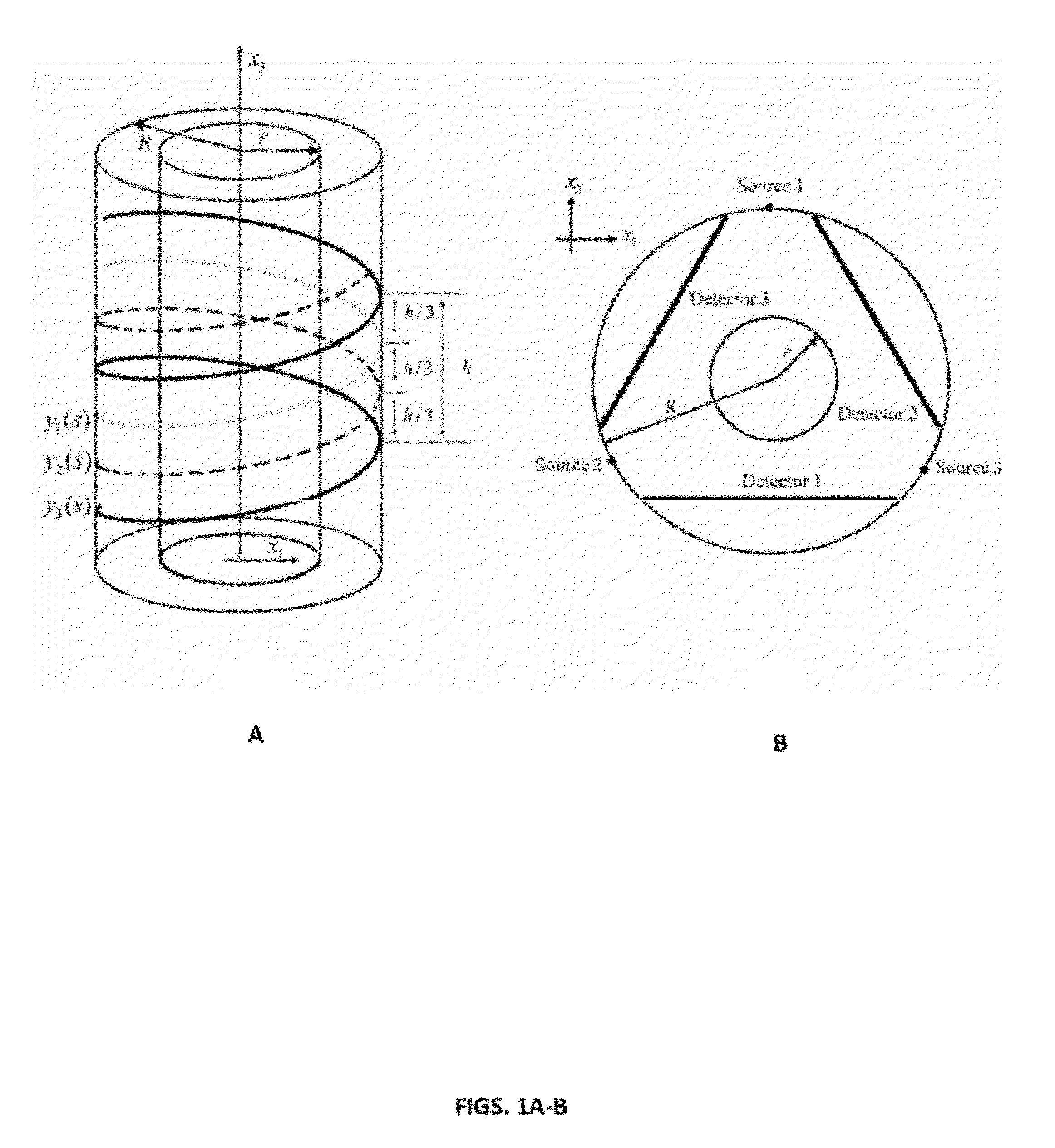Cardiac computed tomography methods and systems using fast exact/quasi-exact filtered back projection algorithms
a computed tomography and fast technology, applied in tomography, instruments, applications, etc., can solve the problems of insufficient development of reliable diagnosis and therapy, cumbersome reconstruction of key subject areas such as the heart, lung, head and neck, etc., to and improve the accuracy of image prediction
- Summary
- Abstract
- Description
- Claims
- Application Information
AI Technical Summary
Benefits of technology
Problems solved by technology
Method used
Image
Examples
example 1
[0135]To verify and showcase the fast FBP algorithms of the present invention, numerical tests were performed using the Clock phantom. This phantom consists of ellipses, as parameterized in Table IV. In the simulations, the origin of the reconstruction coordinate system was set to the center of each phantom. The spherical phantom support was of 375 mm for the experiment. Three sources were arranged uniformly along a circle with their corresponding detectors on the opposite side. The source-detector distance was 1000 mm. Projections were generated from 1000 view angles while the sources and the detectors were constantly moved along three helixes in one turn. The helix was of 750 mm in radius and 100 mm in pitch. The detector plane consisted of 1300×200 detection elements of 1.0×1.0 mm2.
[0136]
TABLE IVParameters of the Clock PhantomNo.xcyczcabcθρ100011101200.800.10.10.10130.40.690.010.10.10.10140.690.40.020.10.10.10150.800.030.10.10.10160.69−0.40.040.10.10.10170.4−0.690.050.10.10.10180...
example 2
[0138]Auxiliary Lemmas were used as described below. A point was fixed at xεΩ and its three associated inter-PI lines were found as shown in FIG. 3. Then, a source position was selected as sε(sj3, sje), jε{1, 2, 3} and how the inter-PI lines project onto the corresponding detector plane was determined. For simplicity, in this disclosure the projection of yi(s), jε{1, 2, 3} on a detector plane is denoted by Ŝj.
[0139]Lemma 1.
[0140]On a detector plane, the slopes of the projected inter-PI lines ŜjsŜjmod3+1e and Ŝ(j+1)mod3+1s Ŝje are always positive, and that of the inter-PI line Ŝjmod3+1sŜ(j+1)mod3+1e, jε{1, 2, 3} is always negative.
[0141]Proof of Lemma 1.
[0142]Without loss of generality or wishing to be limited by theory, the source position was selected to be y1(s0), s0ε(s1s, s1e). By construction, s2e−s1s1e−s3s3e−s2s>0. Hence, the projections of s1s, s3e, and s3s were always to the left of those of s2e, s2e, and s1e respectively (FIG. 18). When sε(s1s, s1e) changed, the point {circu...
PUM
 Login to View More
Login to View More Abstract
Description
Claims
Application Information
 Login to View More
Login to View More - R&D
- Intellectual Property
- Life Sciences
- Materials
- Tech Scout
- Unparalleled Data Quality
- Higher Quality Content
- 60% Fewer Hallucinations
Browse by: Latest US Patents, China's latest patents, Technical Efficacy Thesaurus, Application Domain, Technology Topic, Popular Technical Reports.
© 2025 PatSnap. All rights reserved.Legal|Privacy policy|Modern Slavery Act Transparency Statement|Sitemap|About US| Contact US: help@patsnap.com



